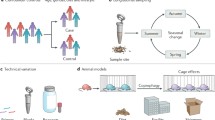Abstract
Metagenomics is the science of analysing the structure and function of DNA samples taken from the environment (e.g. soil or human gut) as opposed to a single organism. So far, researchers have used traditional genomics tools and pipelines applied to metagenomics analysis such as species identification, sequence alignment and assembly. In addition to being computationally expensive, these approaches lack an emphasis on the functional profile of the sample regardless of species diversity, and how it changes under different conditions. It also ignores unculturable species and genes undergoing horizontal transfer. We propose a new pipeline based on taking a “systems” approach to metagenomics analysis, in this case to analyse human gut microbiome data. Instead of identifying existing species, we examine a sample as a self-contained, open system with a distinct functional profile. The pipeline was used to analyse data from an experiment performed on the gut microbiomes of lean, obese and overweight twins. Previous analysis of this data only focused on taxonomic binning. Using our systems metagenomics approach, our analysis found two very different functional profiles for lean and obese twins, with obese ones being distinctly more diverse. There are also interesting differences in metabolic pathways which could indicate specific driving forces for obesity.
Access this chapter
Tax calculation will be finalised at checkout
Purchases are for personal use only
Similar content being viewed by others
References
Breitwieser, F.P., Lu, J., Salzberg, S.L.: A review of methods and databases for metagenomic classification and assembly. Brief. Bioinform. 18(5), 723–734 (2017)
Turnbaugh, P.J., et al.: A core gut microbiome in obese and lean twins. Nature 457(7228), 480 (2009)
Simpson, J.T.: Exploring genome characteristics and sequence quality without a reference. Bioinformatics 30(9), 1228–1235 (2014)
Attwood, T.K.: The PRINTS database: a resource for identification of protein families. Brief. Bioinform. 3(3), 252–263 (2002)
Nei, M., Li, W.-H.: Mathematical model for studying genetic variation in terms of restriction endonucleases (molecular evolution/mitochondrial DNA/nucleotide diversity). Genetics 76(10), 5269–5273 (1979)
Edgar, R.C.: MUSCLE: multiple sequence alignment with high accuracy and high throughput. Nucleic Acids Res. 32(5), 1792–1797 (2004)
Finn, R.D., Clements, J., Eddy, S.R.: HMMER web server: interactive sequence similarity searching. Nucleic Acids Res. 39(suppl_2), W29–W37 (2011)
Boutet, E., Lieberherr, D., Tognolli, M., Schneider, M., Bairoch, A.: UniProtKB/Swiss-Prot. In: Edwards, D. (ed.) Plant Bioinformatics, vol. 406, pp. 89–112. Humana Press, New York (2007). https://doi.org/10.1007/978-1-59745-535-0_4
Sanz, Y., Santacruz, A., Gauffin, P.: Gut microbiota in obesity and metabolic disorders. Proc. Nutr. Soc. 69(3), 434–441 (2010)
Isokpehi, R.D., et al.: Genomic evidence for bacterial determinants influencing obesity development. Int. J. Environ. Res. Public Health 14(4), 345 (2017)
Author information
Authors and Affiliations
Corresponding author
Editor information
Editors and Affiliations
Rights and permissions
Copyright information
© 2018 Springer Nature Switzerland AG
About this paper
Cite this paper
Radwan, G.S., Shanahan, H. (2018). Systems Metagenomics: Applying Systems Biology Thinking to Human Microbiome Analysis. In: Češka, M., Šafránek, D. (eds) Computational Methods in Systems Biology. CMSB 2018. Lecture Notes in Computer Science(), vol 11095. Springer, Cham. https://doi.org/10.1007/978-3-319-99429-1_22
Download citation
DOI: https://doi.org/10.1007/978-3-319-99429-1_22
Published:
Publisher Name: Springer, Cham
Print ISBN: 978-3-319-99428-4
Online ISBN: 978-3-319-99429-1
eBook Packages: Computer ScienceComputer Science (R0)




